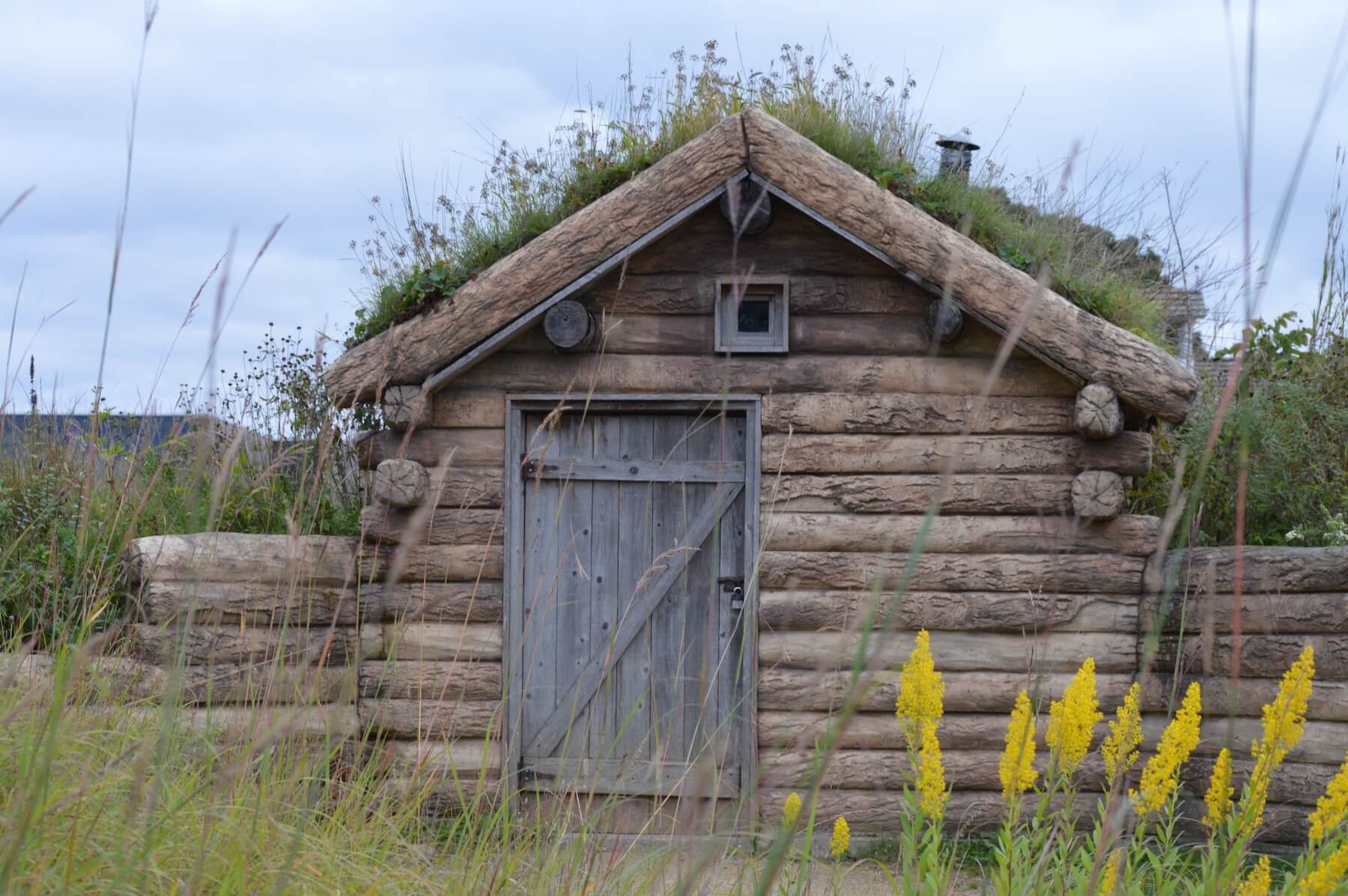What is a Sod House?
In the early frontier days of the U.S., there was a need for homes for the families who were settling in the West. But most of those early pioneers quickly discovered that the traditional building materials such as wood and stone were nowhere to be found. Did they turn back and go back to the East?

Of course they did not. Most had endured long and grueling trips to get to these new lands, and many had staked all of the money they had to do so. Many people lost family members along the way, and some were starting out with nothing but their dedication to their dream and sheer determination. Their salvation came to them in the form of the very ground they walked on when they first arrived.
- The pioneers found that the prairie grass had thick and dense root systems that make cutting solid, uniform blocks of sod easy.
- These blocks held together so well they earned the nickname “Nebraska bricks.”
- Patches of sod were typically cut into rectangles and then stacked together to form a wall. The size of the finished home was limited only by the amount of work put it into. Most of these homes were modest in size, however.
- Despite the name, sod homes did have some wood and other materials. Some were built with wooden frames and many had wood beam and joist roofing skeletons for durability. Some were covered with materials such as stucco or wood paneling on the outside and canvas or plaster on the inside. Carpeting or other materials could be used on the floor, depending on the family’s ability to afford them.
- According to the historical letters, families either loved or hated their sod homes with very few falling in the middle. Some of the complaints against the sod structures were: constant dirt, dealing with the bugs and snakes and the constant maintenance and upkeep. The praise included the ability to stay warm in winter and cool in summer and the relative ease of fixing damages.
- Most sod homes had regular windows and doors.
The Drawbacks of the Sod Homes on the Prairies
Though some loved their sod homes, others were not as thrilled. Even the most ardent of fans found it a little hard to deal with a few things about sod home living.
- Sod homes were typically very well insulated, however they were always slightly damp, no matter what.
- Most of the homes needed nearly constant maintenance. Others could go several years before needing any kind of major work.
- Dirt was a major struggle and made even simple tasks such as cooking a meal a constant challenge. Because of the material, creatures like bugs, spiders, snakes, and mice could easily make their way into the home and become a nuisance.
- In addition to struggles with building materials that led to the need for sod homes, there was a lack of available water and heating sources to deal with as well. Some families were forced to burn the dried manure of their animals, specifically cows and buffalo, which would be covered and piled until needed. The home would stay warm but the smell could be a bit of a problem.
- More people moved to the area and others moved on, which made some of the resources even harder to find.
Sod Homes Today
- There are still nearly a dozen sod homes and reproductions of historical sod homes in the United States including the Cottonwood Ranch in Kansas. In addition to a sod home there is a sod stable there.
- In recent years, some sod homes that are being built in Scandinavia as people look for a way to cut housing costs, heating and cooling costs, and to help save the planet. Sod homes are eco-friendly because the sod can be locally cut and does not require the cutting down of trees or dangerous chemicals to make. Using locally cut sod minimizes the pollution of needless transportation.
- Sod roofing is also being used extensively. Green roofs and living roofs are just another of the ways that homeowners can make the most efficient use of their space. Green roofs allow homeowners to garden if they do not have the room to do so on the ground. Imagine having dinner on your rooftop with food that was actually grown there.
Could You Build and Live in a Sod Home Now?
The U.S., which is very fond of permits, fees and other red tape, has established very little in the way of modern day codes for the building of homes made of sod or a related material, adobe. That being said, you may still have to deal with some legal issues if this is your building material of choice.
- Housing codes for size, location, and plumbing will typically still apply if you build a sod house.
- There are likely to be no contractors or other professionals who would be willing to work with sod in your area. Experts in the field are either in high demand or non-existent at this point. If sod homes become more popular and accepted once again, then the industry will bloom and professionals will emerge. At this point you are likely to be building your home on your own.
- If you do decide to build a sod home, keep in mind the drawbacks from the past and find ways that you can improve on those designs. Do keep in mind that no matter what improvements you make, the house will always be slightly damp because of the very nature of the material you are using.
- A sod roof is much heavier than a traditional material roof, so the support system has to be not only stronger but different as well. It is estimated that the roof’s supports will have to hold twice the weight per square inch as traditional roofs. This may increase your construction costs and make the project a little more complicated, but safety should always be your first consideration.







